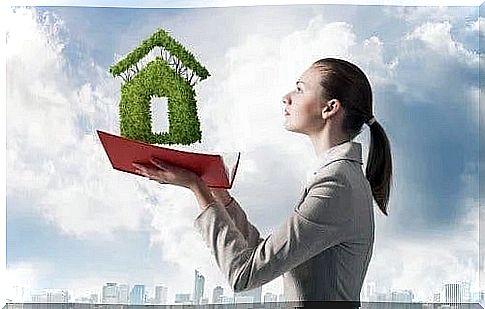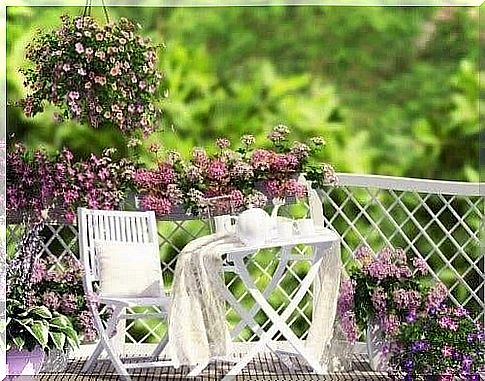Green Terraces And Roofs: 5 Benefits

Sustainable and nature-friendly habits are becoming more and more popular. The ecological trend dominates the different scenarios of the social agenda to guarantee a healthier perspective, both for people and for the planet. Therefore, beautiful green terraces and green roofs are beneficial alternatives.
Although it may seem like a fantasy, the truth is that practices that help reduce environmental pollution also contribute to improving the quality of life. Moreover, most large cities are dominated by concrete and asphalt. These materials cause a dramatic rise in temperature.
In fact, it has been shown that a single asphalt roof can generate about 70 ° C on its surface. For this reason, heat is abundant in metropolises, being a product of the jungle of buildings, streets and other polluting areas.
This form of building is known as the “island of urban heat”. Most buildings maintain and accumulate high temperatures for several days.
Ecological terraces and roofs: what are they?
Eco-friendly terraces and roofs are sustainable ecosystems that you can use at home. There are different types, depending on the characteristics of the roof. They can be semi-extended or extended. In general, they help you extend the useful life of the house, facilitating better waterproofing and optimizing thermal insulation.
That being said, let’s take a look at their benefits.
Aesthetic improvements

Ecological terraces and roofs are striking aesthetically, being very beautiful. They are elegant and comfortable environments, framed in an ecological perspective.
Ecological terraces and roofs clean the air of the houses, which implies a higher oxygenation and a lower heat during the summer. This situation has an important economic effect, as it reduces the cost of electrical temperature regulators.
Also, the direct benefit of better air quality is the reduction of respiratory problems associated with excess carbon monoxide and other pollutants that abound in large urban centers.
Recycling and reuse of rainwater

The collapse of the sewers, caused by heavy rains, is a relatively common problem. Polluted water in large urban centers is at alarming levels.
The restoration of the natural cycle causes a decrease in floods resulting from rains, which is another great advantage of ecological terraces and roofs. They also allow water to be reused after it has been purified by plants that filter contaminated substances.
Cohabitation is much more pleasant when annoying noises are reduced. An environmentally friendly roof helps reduce outside noise by up to about 50 decibels.
This ecological situation improves people’s quality of life. This is especially true for those who suffer from nervous disorders or work from home, increasing their productivity.
saving

The average lifespan of a roof protected only by asphalt waterproofing membrane is 15 years. This is due to direct exposure to the sun, as well as all atmospheric changes, mainly due to temperature variations.
Instead, eco-friendly terraces and roofs effectively protect, thanks to the fact that the vegetation reduces and keeps away heat. This situation increases the use of the roof up to about 25 years. Therefore, this translates into a reduction of about 40% in maintenance costs.
An increasing number of ecological terraces and roofs in urban areas
Green roofs beautify parks, gardens and other green areas in cities. In addition to being recreational options, they help solve the world’s greenhouse problems.
In addition, they are very useful spaces for the production and internal consumption of plant foods, especially in areas where buildings abound. The benefits can be significant through the planning and commitment of organized communities.
So what are you waiting for? Find ways to make your roof or terrace as ecological as possible!









